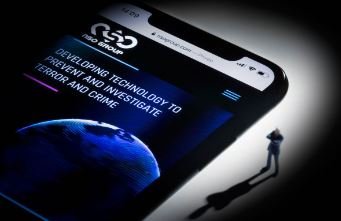NSO Group faces legal action in Washington over allegations that its software was used to hack government officials and dissidents.
A mysterious fake image file, mistakenly left behind by spyware, tipped off security researchers.
Discovery amounted to a hacking blueprint and led Apple Inc to notify thousands of other state-backed hacking victims around world.
WASHINGTON: A single activist helped turn the tide against NSO Group, one of the world’s most sophisticated spyware companies now facing a cascade of legal action and scrutiny in Washington over damaging new allegations that its software was used to hack government officials and dissidents around the world.
It all started with a software glitch on her iPhone. An unusual error in NSO’s spyware allowed Saudi women’s rights activist Loujain al-Hathloul and privacy researchers to discover a trove of evidence suggesting the Israeli spyware maker had helped hack her iPhone, according to six people involved in the incident. A mysterious fake image file within her phone, mistakenly left behind by the spyware, tipped off security researchers.
The discovery on al-Hathloul’s phone last year ignited a storm of legal and government action that has put NSO on the defensive. How the hack was initially uncovered is reported here for the first time.
Al-Hathloul, one of Saudi Arabia’s most prominent activists, is known for helping lead a campaign to end the ban on women drivers in Saudi Arabia. She was released from jail in February 2021 on charges of harming national security.
Soon after her release from jail, the activist received an email from Google warning her that state-backed hackers had tried to penetrate her Gmail account. Fearful that her iPhone had been hacked as well, al-Hathloul contacted the Canadian privacy rights group Citizen Lab and asked them to probe her device for evidence, three people close to al-Hathloul told Reuters.
After six months of digging through her iPhone records, Citizen Lab researcher Bill Marczak made what he described as an unprecedented discovery: a malfunction in the surveillance software implanted on her phone had left a copy of the malicious image file, rather than deleting itself, after stealing the messages of its target.
He said the finding, computer code left by the attack, provided direct evidence NSO built the espionage tool.
“It was a game changer,” said Marczak “We caught something that the company thought was uncatchable.”
The discovery amounted to a hacking blueprint and led Apple Inc to notify thousands of other state-backed hacking victims around the world, according to four people with direct knowledge of the incident.
Citizen Lab and al-Hathloul’s find provided the basis for Apple’s November 2021 lawsuit against NSO and it also reverberated in Washington, where US officials learned that NSO’s cyberweapon was used to spy on American diplomats. In recent years, the spyware industry has enjoyed explosive growth as governments around the world buy phone hacking software that allows the kind of digital surveillance once the purview of just a few elite intelligence agencies.
Over the past year, a series of revelations from journalists and activists, including the international journalism collaboration Pegasus Project, has tied the spyware industry to human rights violations, fueling greater scrutiny of NSO and its peers. But security researchers say the al-Hathloul discovery was the first to provide a blueprint of a powerful new form of cyberespionage, a hacking tool that penetrates devices without any interaction from the user, providing the most concrete evidence to date of the scope of the weapon.
In a statement, an NSO spokesperson said the company does not operate the hacking tools it sells – “government, law enforcement and intelligence agencies do.” The spokesperson did not answer questions on whether its software was used to target al-Hathloul or other activists. But the spokesperson said the organizations making those claims were “political opponents of cyber intelligence,” and suggested some of the allegations were “contractually and technologically impossible.” The spokesperson declined to provide specifics, citing client confidentiality agreements.
Without elaborating on specifics, the company said it had an established procedure to investigate alleged misuse of its products and had cut off clients over human rights issues.
https://www.facebook.com/peftnmedianews/ https://www.twitter.com/TNMediaNews/





